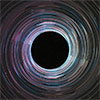 Proposing an alternative model for how the universe came to be, a team of astrophysicists suggests that all black holes - from those as tiny as a pin head to those covering billions of miles - were created instantly after the Big Bang and account for all dark matter.
Proposing an alternative model for how the universe came to be, a team of astrophysicists suggests that all black holes - from those as tiny as a pin head to those covering billions of miles - were created instantly after the Big Bang and account for all dark matter.
Dec 20th, 2021
Read more
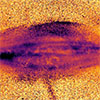 An international team of astronomers has revealed a new map of the Milky Way's outer disc showing remains of tidal arms excited from interactions with satellite galaxies in the distant past.
An international team of astronomers has revealed a new map of the Milky Way's outer disc showing remains of tidal arms excited from interactions with satellite galaxies in the distant past.
Dec 17th, 2021
Read more
 A new study features a method of deriving the rotation periods of stars from just one observation of the stellar activity rather than repeated observations over several weeks which are needed to directly measure the rotation period. The method has possible implications for the determination of the ages of stars.
A new study features a method of deriving the rotation periods of stars from just one observation of the stellar activity rather than repeated observations over several weeks which are needed to directly measure the rotation period. The method has possible implications for the determination of the ages of stars.
Dec 16th, 2021
Read more
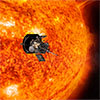 A spacecraft launched by NASA has done what was once thought impossible. On April 28, the Parker Solar Probe successfully entered the corona of the Sun - an extreme environment that's roughly 1.1 million degrees C.
A spacecraft launched by NASA has done what was once thought impossible. On April 28, the Parker Solar Probe successfully entered the corona of the Sun - an extreme environment that's roughly 1.1 million degrees C.
Dec 14th, 2021
Read more
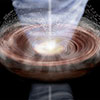 The world's first 3D simulation simultaneously considering dust motion and growth in a disk around a young star has shown that large dust from the central region can be entrained by and then ejected by gas outflows, and eventually fall back onto the outer regions of the disk where it may enable planetesimal formation.
The world's first 3D simulation simultaneously considering dust motion and growth in a disk around a young star has shown that large dust from the central region can be entrained by and then ejected by gas outflows, and eventually fall back onto the outer regions of the disk where it may enable planetesimal formation.
Dec 14th, 2021
Read more
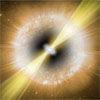 The discovery, based on an unusual event dubbed 'the Cow', may offer astronomers a new way to spot infant compact objects.
The discovery, based on an unusual event dubbed 'the Cow', may offer astronomers a new way to spot infant compact objects.
Dec 13th, 2021
Read more
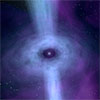 The theory of general relativity passes a range of precise tests set by pair of extreme stars.
The theory of general relativity passes a range of precise tests set by pair of extreme stars.
Dec 13th, 2021
Read more
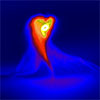 An international study focusing on an infamous star in Orion may help to shed light on how the solar system formed.
An international study focusing on an infamous star in Orion may help to shed light on how the solar system formed.
Dec 10th, 2021
Read more
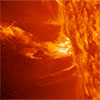 If you ever wanted to be an astronomer, now is your chance. A new citizen science project allows volunteers to play an important role in learning more about the Sun by using their personal computers.
If you ever wanted to be an astronomer, now is your chance. A new citizen science project allows volunteers to play an important role in learning more about the Sun by using their personal computers.
Dec 9th, 2021
Read more
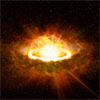 A team of astronomers has discovered the fastest optical flash of a Type Ia supernova.
A team of astronomers has discovered the fastest optical flash of a Type Ia supernova.
Dec 9th, 2021
Read more
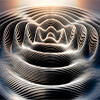 Researchers trained a neural network to estimate - in just a few seconds - the precise characteristics of merging black holes based on their gravitational-wave emissions. The network determines the masses and spins of the black holes, where in the sky, at what angle, and how far away from Earth the merger took place.
Researchers trained a neural network to estimate - in just a few seconds - the precise characteristics of merging black holes based on their gravitational-wave emissions. The network determines the masses and spins of the black holes, where in the sky, at what angle, and how far away from Earth the merger took place.
Dec 9th, 2021
Read more
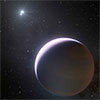 The European Southern Observatory's Very Large Telescope has captured an image of a planet orbiting b Centauri, a two-star system that can be seen with the naked eye.
The European Southern Observatory's Very Large Telescope has captured an image of a planet orbiting b Centauri, a two-star system that can be seen with the naked eye.
Dec 8th, 2021
Read more
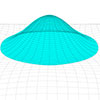 A team of theoretical researchers have found it might be possible to detect Q-balls in gravitational waves, and their detection would answer why more matter than anti-matter to be left over after the Big Bang.
A team of theoretical researchers have found it might be possible to detect Q-balls in gravitational waves, and their detection would answer why more matter than anti-matter to be left over after the Big Bang.
Dec 8th, 2021
Read more
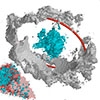 A 1,000-year-old supernova has been captured in 3D images that reveal yet unseen details of the elements that are ejected when a star explodes. Analysis of data from the Multi-Unit Spectroscopic Explorer (MUSE) and X-shooter at the European Southern Observatory's (ESO) Very Large Telescope (VLT), offers new insights into how stars self-destruct.
A 1,000-year-old supernova has been captured in 3D images that reveal yet unseen details of the elements that are ejected when a star explodes. Analysis of data from the Multi-Unit Spectroscopic Explorer (MUSE) and X-shooter at the European Southern Observatory's (ESO) Very Large Telescope (VLT), offers new insights into how stars self-destruct.
Dec 8th, 2021
Read more
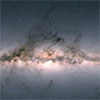 Astronomers have discovered an unusually massive black hole at the heart of one of the Milky Way's dwarf satellite galaxies, called Leo I. Almost as massive as the black hole in our own galaxy, the finding could redefine our understanding of how all galaxies evolve.
Astronomers have discovered an unusually massive black hole at the heart of one of the Milky Way's dwarf satellite galaxies, called Leo I. Almost as massive as the black hole in our own galaxy, the finding could redefine our understanding of how all galaxies evolve.
Dec 1st, 2021
Read more
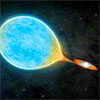 Astronomers have observed a new type of binary star that has long been theorized to exist. The discovery finally confirms how a rare type of star in the universe forms and evolves.
Astronomers have observed a new type of binary star that has long been theorized to exist. The discovery finally confirms how a rare type of star in the universe forms and evolves.
Dec 1st, 2021
Read more
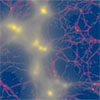 Scientists present computer simulations that capture the complex dynamics of elusive neutrinos left over from the Big Bang.
Scientists present computer simulations that capture the complex dynamics of elusive neutrinos left over from the Big Bang.
Dec 1st, 2021
Read more
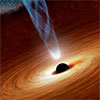 The hunt for gravitational waves, ripples in space and time caused by major cosmic cataclysms, could help solve one of the Universe's other burning mysteries - boson clouds and whether they are a leading contender for dark matter.
The hunt for gravitational waves, ripples in space and time caused by major cosmic cataclysms, could help solve one of the Universe's other burning mysteries - boson clouds and whether they are a leading contender for dark matter.
Dec 1st, 2021
Read more
 Proposing an alternative model for how the universe came to be, a team of astrophysicists suggests that all black holes - from those as tiny as a pin head to those covering billions of miles - were created instantly after the Big Bang and account for all dark matter.
Proposing an alternative model for how the universe came to be, a team of astrophysicists suggests that all black holes - from those as tiny as a pin head to those covering billions of miles - were created instantly after the Big Bang and account for all dark matter.
 Subscribe to our Space Exploration News feed
Subscribe to our Space Exploration News feed















